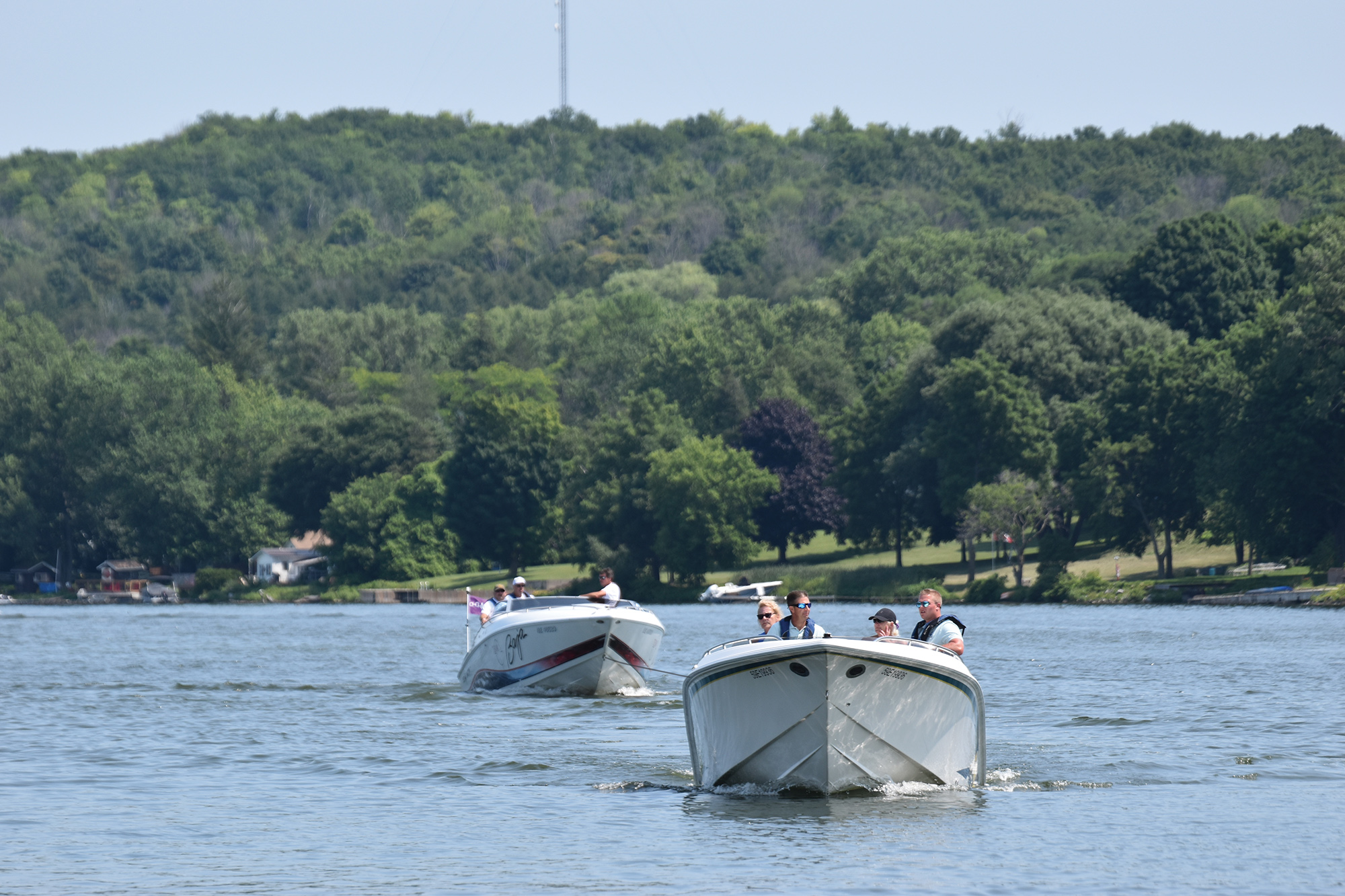Smart Towing Tips to Ensure You and Your Boat Return Safely to Shore
By Mark King
It’s a fine summer day and you’re cruising along in your boat when suddenly your engine sputters to a stop. After flagging down a passing vessel, its skipper agrees to give you a tow. He tosses one of his stern lines and tells you to tie it to your bow cleat, promising to have you back at the dock in no time.
What will likely unfold next – unless his boat is a lot larger and more powerful that yours – is a lot of slewing through the water and an uncomfortable ride for you and your guests. Towing another vessel is not an easy feat. There are a lot of precautions to take and if you don’t tow properly, the results could be disastrous.
Commercial towing vessels have a bitt that allows pivoting and provides a strong connection. It also enables helmsmen to quickly lengthen or shorten the towline to compensate for changing conditions. If you need a tow, always hire someone who knows what they’re doing. If that isn’t possible, take the utmost safety measures. The best place to connect a line is on the bow ring, which is located down by the waterline. However, most boats measuring 30 feet-plus aren’t equipped with one. If that’s the case, you may need to build a bridle, which will spread the weight over two or more attachment points and minimize yawing.
If the water is rough when you’re preparing to transfer lines, an effective method is to have the towing vessel drag a line off its stern (with two fenders attached to the rope to keep it afloat) and slowly cruise past the towed boat. This allows the stranded passengers to easily pick up the line at the stern and prevent the line from getting tangled in the running gear. In calmer water, simply throw a heaving line from vessel to vessel.
Once the vessel is being towed, both helmsmen should communicate over a designated VHF channel. Also, constantly check the lines for chafing and make sure the hardware is not under excessive stress. Keep the fenders clear at all times and ensure no one is straddling the rope or in the line of the rope; lines under towing conditions can potentially snap, whip rapidly and cause severe injuries.
Keep the speed to a minimum – under seven knots – to avoid overworking vessels and towing equipment. If you’re in protected water and using a shorter towline, speed becomes critical since both boats will slow at different rates. Also make sure the towed vessel doesn’t overtake the towing vessel, which is controlled with the rate of speed. Always keep lines fairly tight and if there is any slack, the towed boat may lose control and loose lines can potentially get wrapped in propellers, shafts and outdrives.
Once you’re close to the dock, proceed very slowly. Work with, not against the wind and current, to land the disabled boat. Ideally, someone on shore must also be contacted in advance to help dock the towed vessel.
Keyword : boat handling, boat handling course, BOAT trailer tips, Boating, BOATING advice, BOATING DIY, BOATING Guru, BOATING hints, BOATING hitch types, boating lifestyle, Boating Lifestyle Magazine, BOATING Tech, Boating Tech Talk, boating tips, BOATING Touring, choosing a hitch, expert BOATING advice, Handle with Care Column, hitching a trailer, how to drive a boat, How to fix your boat, how to hitch a BOAT trailer, How to tow a boat, PFD Life Jackets boating safety, tow a boat, towing tipe, towing tips, what boat is best boat handling, boat handling course, BOAT trailer tips, Boating, BOATING advice, BOATING DIY, BOATING Guru, BOATING hints, BOATING hitch types, boating lifestyle, Boating Lifestyle Magazine, BOATING Tech, Boating Tech Talk, boating tips, BOATING Touring, choosing a hitch, expert BOATING advice, Handle with Care Column, hitching a trailer, how to drive a boat, How to fix your boat, how to hitch a BOAT trailer, How to tow a boat, PFD Life Jackets boating safety, tow a boat, towing tipe, towing tips, what boat is best
